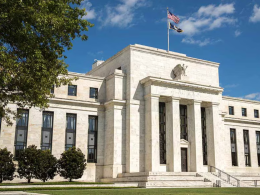Again, some analysts have suggested that we are only dealing with a slowdown in the growth rate of the WLI. This is not accurate. We're observing a sharp contraction in the leading index itself. But just for fun, the chart below shows the 13-week change in the growth rate. This would clearly go into the file labeled "Ugly."

Betting on a Bubble
Much of my research last week was spent working with our various measures of valuation. While the extent of implied overvaluation on our best measures does have a range of variation, that range runs between about 25%-40% overvalued. We certainly know of many valuation indicators that suggest that stocks are "cheap" here. Unfortunately, they don't demonstrate any reliability in historical tests. It is almost mind-numbing to observe how many analysts confidently make valuation claims about the market on CNBC, evidently without ever having done any historical research. If you don't require evidence, you can say anything you want.
For our part, the following charts provide a good overview of where stocks are valued at present.
To create the first chart, I used our standard methodology based on normalized earnings. As long-term readers of these comments know, this method generates projected 10-year total returns for the S&P 500 Index. Presently, we estimate that the S&P 500 is priced to deliver a 10-year annual total return of about 6.71% here. So including reinvested dividends, one dollar of value in the S&P 500 10 years from today probably costs investors (1/1.0671^10) = 52.2 cents here. If the S&P 500 was priced to deliver a 10-year total return of 10%, that same dollar of value would cost investors (1/1.10^10) = 38.6 cents here. On that basis, the chart below would show a valuation ratio of 52.2/38.6 = 1.35, implying 35% overvaluation at current prices.














When you say "if you require the money for retirement a short number of years get out".
I am needing mine in less than 5, when you say get out are you talking GIC's or related products or Bond and income type funds.
Thanks
Specifically, John Hussman writes "Investors who will need to fund specific expenses within a short number of years – retirement needs, tuition, health care, home purchases etc – should not be relying on a continued market advance."
Interpretation is that one should reduce/cut risk on funds that are invested in risky assets such as equities required within 5 years, or, conversely, increase holdings in vehicles like GICs, short term bonds/bond funds, money market funds, that sort of thing on funds you'll require within 5 years.